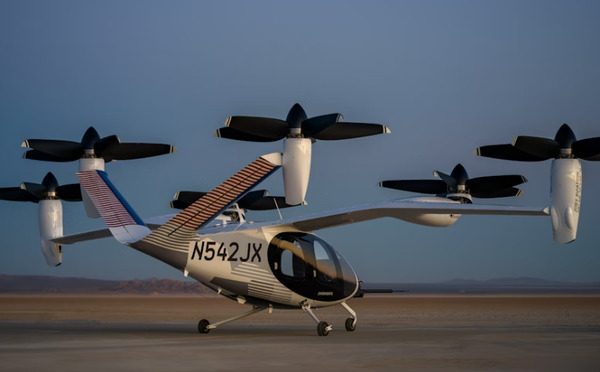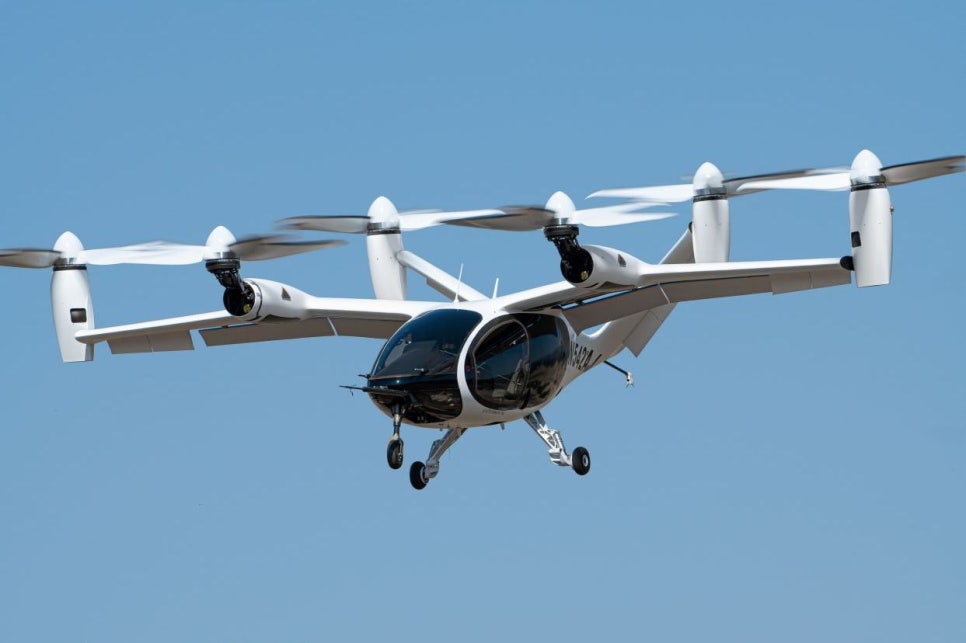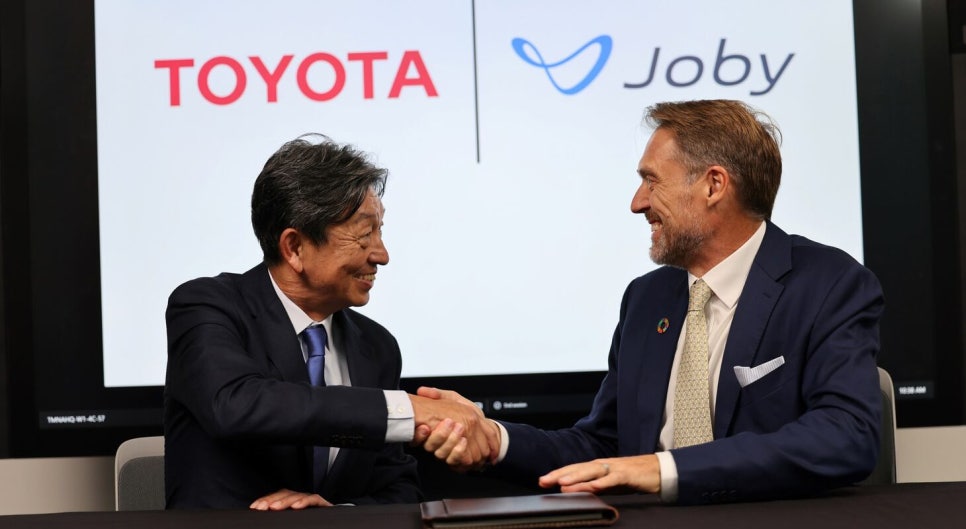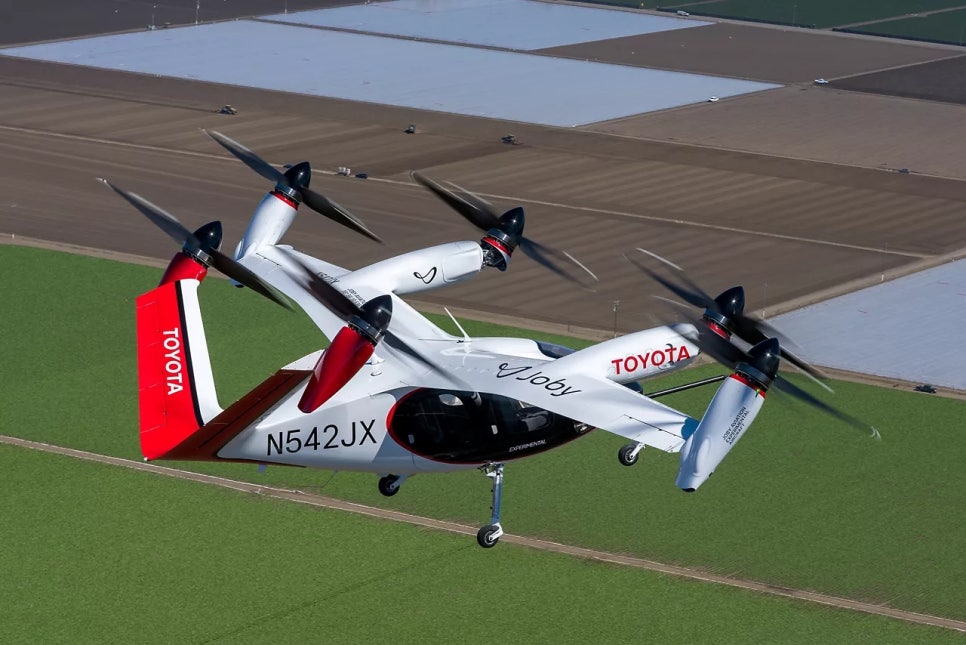Table of Contents
- The paradigm of future transportation: Reasons to pay attention to Joby Aviation
- The driving force behind JOBY's stock surge: Manufacturing capabilities and global validation
- Core of technology: In-depth analysis of the S4 aircraft
- Unique business performance and market leadership building strategy
- Future perspective and summary from an investment standpoint
- Frequently Asked Questions (FAQ)
The paradigm of future transportation: Reasons to pay attention to Joby Aviation

Joby Aviation, which is attracting attention in the emerging electric vertical takeoff and landing (eVTOL) aircraft sector, has recently seen its stock price soar, garnering significant interest. This is interpreted not as simple speculation, but as a result of achievements shown in the certification process with the Federal Aviation Administration (FAA) and strengthened manufacturing capabilities through strategic partnerships that reduce business risks.
With these factors combined, a positive reevaluation in the market is taking place, increasing expectations for future growth potential. It is crucial to pay attention to how Joby Aviation’s actions will impact the eVTOL industry moving forward.

As the urban air mobility (UAM) market is gaining momentum, we look into what strategies Joby is implementing to secure its leadership in the market. In particular, we analyze the key features of the S4 aircraft, the company’s core technology, and discuss the business performance and future potential from an investment perspective.
The driving force behind JOBY's stock surge: Manufacturing capabilities and global validation

The record high of Joby's stock in July 2025 reflects the convergence of several key milestones indicating that the company's vision is becoming a reality. It is evident that the market is valuing concrete feasibility over simple ideas, which signifies the company's entry into the commercialization phase.

The most important facilitating factor is the expansion of manufacturing capabilities. Joby announced plans to expand the scale of its California Marina facility to approximately 40,460 square meters in July 2025, aiming to double its production volume. In addition, a new facility in Dayton, Ohio, with the capacity to produce up to 500 aircraft annually is planned, which will help enhance market confidence in large-scale production.
Particularly noteworthy is Toyota's deep involvement in this process, which further strengthens confidence that Joby can overcome various obstacles in technology development and tackle the significant challenge of 'manufacturing execution.' This strategic partnership and expansion of manufacturing capabilities significantly enhance Joby's growth potential.

The success of the manned flight in Dubai has been evaluated as evidence of technological superiority. It effectively validated Joby's aircraft technology and operational readiness while demonstrating the high demand for future transportation solutions in the Middle East and the willingness of regulatory authorities to cooperate. This achievement has reinforced the investors' perception that Joby may hold a significant position in the global UAM market beyond the United States. Joby's initiatives are expected to have a major impact on the future of the air mobility industry.
Core of technology: In-depth analysis of the S4 aircraft

Joby's competitiveness stems from its ambitious vision supported by excellent technology. The S4 aircraft, a key asset of the company, has the potential to innovate transportation in terms of performance, noise, and safety.
The S4 can accommodate one pilot and four passengers, with a maximum speed of up to 322 km/h. It can also fly up to 241 km on a single charge. The aircraft's core technology utilizes a distributed electric propulsion (DEP) system with six tilt-rotors, maximizing efficiency during vertical takeoff like a helicopter and during cruise flight like a fixed-wing aircraft.
This technological capability serves as the foundation for Joby to present a new paradigm in air transportation.

The most prominent feature of the S4 is its 'quietness', which determines the success of UAM operations. Helicopter noise (over 90 dBA) has been a significant limitation for urban operations; however, Joby S4 achieved excellent low noise results of less than 65 dBA (level of normal conversation) at a distance of 100m during takeoff and 45.2 dBA (level of quiet suburban background noise) at an altitude of 500m during cruise, as validated through tests conducted in collaboration with NASA.
This noise reduction technology is a key that enables the installation of vertiports in urban areas, not just at airports. It lays the foundation for developing a true urban transportation network rather than being limited to airport shuttle services.
Thanks to the S4's quietness, it is expected to operate in various urban areas, bringing innovation to the future transportation system. This change holds the potential to dramatically alter how people move.
"Joby's low-noise technology is not just a convenience feature; it is a key driver that exponentially expands the potential market size (TAM) for UAM services."
Unique business performance and market leadership building strategy

Joby adopts a vertically integrated strategy that encompasses not only aircraft manufacturing but also design, production, booking app development, and operations services. This approach enhances quality control and development speed, securing a strong competitiveness that quickly responds to market fluctuations.

Joby is forming a 'risk mitigation ecosystem' through strategic partnerships with top companies in various fields, thereby solidifying its market leadership.
For example, Toyota is providing around $900 million in funding and introducing its world-class mass production expertise (TPS), significantly reducing manufacturing process risks. Additionally, through an exclusive partnership with Delta Airlines, Joby has successfully secured an upscale clientele at major hub airports such as New York and Los Angeles.
Furthermore, collaboration with SK Telecom is enabling entries into important markets in Asia, while cooperation with the U.S. Department of Defense is aiding in collecting flight data in complex environments and generating initial revenue.
This organically connected partnership network acts as a strong shield that other competitors find difficult to replicate, further enhancing Joby's competitiveness. These strategic alliances serve as an important foundation for pursuing both growth and stability for the company.
Future perspective and summary from an investment standpoint

Joby Aviation is currently a pre-revenue company without sales, presenting high risk and high reward potential for investors. As of the first quarter of 2025, the company is using approximately $111 million in cash while carrying a significant cost structure. However, by securing over $800 million in stable cash liquidity through continued investment from companies like Toyota and SK Telecom, it is expected that this financial foundation will enhance future growth potential.
Investors are required to approach this opportunity cautiously, with the possibility of positive results depending on future business developments.

Joby Aviation leads in the FAA certification process, firmly establishing its position in the UAM industry through its S4 aircraft's low-noise technology and strong collaborations with Toyota and Delta. However, to achieve this success, it must successfully address significant challenges such as the final FAA certification, building a mass production system, and securing public acceptance.
Thus, investments in Joby Aviation can be seen as a bet on the potential to become the 'Tesla of the skies' from a long-term perspective. The recent rise in stock prices illustrates that the market is increasing its confidence in the company's chances for success, but investors need to carefully consider the remaining risks related to commercialization in conjunction with their investment preferences. It is crucial to make informed investment decisions with this in mind.
#Joby, #JobyAviation, #JOBYstock, #UAM, #eVTOL, #urbanairmobility, #S4aircraft, #futureoutlook, #investmentanalysis, #businessfeasibility, #marketleadership, #JobyAviation, #airtaxi, #flyingcar, #FAAcertification, #Toyota, #DeltaAirlines, #SKTelecom, #USstocks, #growthstocks, #techstocks, #valuation, #revenue, #profit, #recordhigh, #stockoutlook, #electricaircraft, #quietsoundaircraft, #futuretransportation, #innovativetechnology
Frequently Asked Questions (FAQ)
Q. What are the main reasons for Joby Aviation's stock surge?
The surge in Joby Aviation's stock is due to FAA certification success, enhanced manufacturing capabilities, and strategic partnerships.
The reason for the significant rise in Joby Aviation's stock price is not simply speculative but stems from positive results during the FAA certification process. Additionally, the substantial improvement in manufacturing capabilities through collaboration with strategic partners like Toyota has significantly reduced business risks, leading to a high valuation of the company's growth potential in the market.
Q. What features does the S4 aircraft, Joby Aviation's core technology, have?
The S4 aircraft features a maximum speed of 322 km/h, a range of 241 km, and quiet high-efficiency flight using six tilt-rotors.
The S4 aircraft can accommodate one pilot and four passengers, reaching a maximum speed of 322 km/h. It can fly up to 241 km on a single charge and is equipped with a distributed electric propulsion system using six tilt-rotors, enabling efficient performance in both vertical takeoff and fixed-wing cruise flight. Particularly, it is equipped with innovative technology that delivers very low noise during takeoff and cruise, making it suitable for urban air mobility.
Q. What is Joby's strategy to enhance manufacturing capabilities?
Joby is expanding new facilities in California and Ohio and enhancing mass production capabilities through collaboration with Toyota.
Joby plans to increase the production capacity of its Marina facility in California in 2025 to double its output and build a new facility in Dayton, Ohio, capable of producing a maximum of 500 aircraft annually. Notably, Toyota is providing funding and manufacturing expertise (TPS), significantly reducing manufacturing risks and assisting Joby in establishing a stable and large-scale production system.
Q. What comprises Joby Aviation's key strategic partnerships?
Joby is strengthening risk management and market leadership through partnerships with Toyota, Delta Airlines, SK Telecom, and the U.S. Department of Defense.
Joby is receiving around $900 million in investment from Toyota along with support in mass production expertise. Through an exclusive partnership with Delta Airlines, they have secured an upscale clientele at major urban airports in the U.S., while collaboration with SK Telecom is enabling entry into the Asian market. Additionally, partnerships with the U.S. Department of Defense help in collecting complex flight environment data and generating initial sales, as Joby develops a 'risk mitigation ecosystem' with its partners.
Q. What financial risks should investors consider when investing in Joby Aviation?
Currently a pre-revenue company with significant cash consumption, Joby presents high-risk, high-reward investment opportunities backed by stable cash liquidity.
Joby is still in the pre-revenue stage, having used approximately $111 million in cash as of Q1 2025. The high cost structure and investment carry characteristics of high risk and high returns. However, with over $800 million in stable cash inflow from partnerships like Toyota and SK Telecom, the financial foundation for future growth is being established, warranting careful judgment by investors.
Q. What position will Joby Aviation hold in the future urban air mobility market?
With FAA certification leadership, innovative technology, and global strategy, Joby is positioning itself as a leader in the UAM industry.
Joby is at the forefront of the FAA certification process, strongly establishing its position in the urban air mobility (UAM) market through its innovative S4 aircraft technology and global partnerships with Toyota and Delta. While securing public acceptance, building mass production, and achieving final FAA certification will be key challenges, long-term perspectives project Joby as the 'Tesla of the skies' and a significant player in future transport.